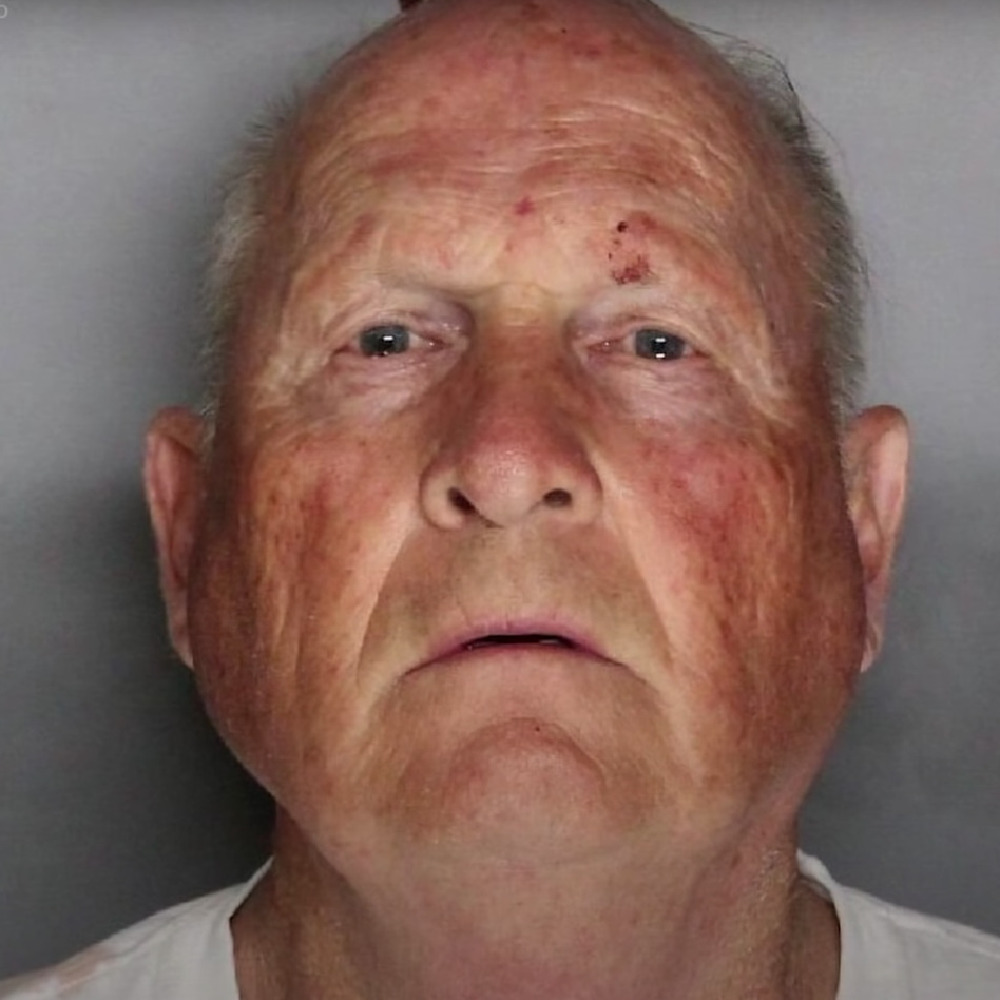The Golden State Killer was a tough criminal to find, as technology wasn’t as effective back when they were active, and the killer’s crimes took place in different jurisdictions, meaning that not every authority had every piece of the puzzle. This particular criminal seemed to have no reason for his gruesome crimes, and also appeared to be unstoppable...

The Golden State Killer / Picture Credit: Buzzfeed Unsolved Network on YouTube
Who is the Golden State Killer?
The Golden State Killer (GSK) is responsible for a series of burglaries, rapes and killings that occurred across northern California (CA) within the 1970s and 1980s.
Between 1976 and 1979 more than 40 rapes in northern CA were said to be the actions of someone who was named the East Area Rapist.
In southern CA, between 1978 and 1986, a serial killer who was named the Original Night Stalker (as to not confuse him with Richard Ramirez, The Night Stalker) took the lives of 10 people. In 2001, DNA analysis showed that these crimes (the rapes) were committed by the same man, not by two separate criminals.
The perpetrator was then dubbed the Golden State Killer by crime writer Michelle McNamara.
In 2018, Joseph DeAngelo, a former police officer, was apprehended and charged with 13 murders and other crimes linked to the GSK. In June last year (2020), he pleaded guilty to these charges.
Crimes
Before turning to rape and murder, the GSK was culpable for a chain of burglaries in northern CA city Visalia in 1974-1975. The culprit took small trophies from the houses he ransacked, and also went through many female underwear draws.
In June 1976, the first reported rape linked to the GSK occurred in Sacramento City. The attack was followed by more assaults in the east of Sacramento County. The rapist would do on to rape at least 40 women in northern CA between ’76 and ’79.
During these unthinkable crimes, the GSK would spend many hours in the homes of his victims, sometimes taking a break to eat or even cry. He stole many personal items form people, such as jewellery and photographs.
At first, the GSK would only target women and girls – two of his targets being 13-year-old girls – who were either alone or with other children; by 1977 he moved on to attacking (older) couples.
The killer would frequently break into a house, have a female victim tie up her male partner and place dishes/plates on his back, telling them that if the plates fell or broke, he would kill them. He would then assault the woman; some victims were even taunted with phone calls by their attacker.
It seemed that the GSK surveyed homes – usually single-story – in order to get a feel for the house and the area it was in before making a move. The more these attacks went on, the more the people of Sacramento became afraid; many citizens lived in constant fear for their lives and safety.
In 1977, the GSK raped a victim in Stockton, just outside of Sacramento. He soon turned his attention to Modesto, San Jose, and Contra Costa County. The following year, he shot and killed a Sacramento couple who were out walking their dog. After 1979, it seemed that the serial rapes in northern CA had ceased; however, that was not the end of the GSK’s crimes.
10 people – four heterosexual couples and two individual women – were killed by the GSK in Santa Barbara, Ventura, and Orange Counties between 1979 and 1986.
By late 1979, the culprit went after victims in southern CA; he continued to rape female victims, then brutally murder her and her partner (if he was present).

Persuing the Golden State Killer
Attacks by the GSK were linked by the fact he wore a ski mask and tied his victims’ hands. Police believed they were looking for a young while male who wore a size nine shoe, and was around 5”9.
With DNA tracking not available to track suspects, it was difficult to prove that one man committed all the offences authorities were looking at.
Due to the various locations in which the killer committed his crimes, it took police some time to link killings that occurred under different jurisdictions.
Similarities between the southern CA killings eventually led investigators to link them together. Despite much evidence being destroyed – due to the statute of limitations of rape expiring – enough was left for DNA analysts to confirm that the East Area Rapist and the Original Night Stalker were the same man.
Around 2011, crime writer Michelle McNamara dubbed the killer, who was still active, the ‘Golden State Killer’.
In June of 2016, 40 years after the first known assault by the GSK, the FBI offered a $50,000 reward for anyone who could help with the case.
Suspect: Joseph DeAngelo
DeAngelo served as a police officer in two different northern CA communities between 1973 and 1979. He left the force after being arrested for stealing a hammer and dog repellent from a store in 1979.
Joseph James DeAngelo was born on Bath, New York, on November 8th, 1945. He served in Vietnam in the US Navy, and studied criminal justice at California State University.
DeAngelo worked at a supermarket distribution centre as a mechanic for 27 years; he retired in 2017.
The arrest of DeAngelo
Investigators used the DNA evidence in their possession to create a genetic profile on the GSK. Late in 2017, they uploaded this profile to a genealogy database.
This showed authorities a family link to DeAngelo. They continued to collect ‘discarded DNA’ from DeAngelo, which proved to be a match to DNA from crimes committed by the GSK.
On April 24th, 2018, 72-year-old DeAngelo was arrested.

DeAngelo was charged with 13 murders and 13 counts of kidnapping for purposes of robbery. He, unfortunately, could not be charged with any rapes he committed due to statute of limitations having expired for those crimes.
In March 2020, DeAngelo made the offer to plead guilty in exchange for a life sentence. Prosecutors refused this deal at first, as they were chasing the death penalty but, in June 2020, news reports stated that an agreement had been reached so DeAngelo could plead guilty to avoid the death sentence.
On June 29th, 2020, DeAngelo pleaded guilty to all 26 charges and was sentenced to a life imprisonment. In August that same year, he was sentenced to a life in prison – without the possibility of parole.
Written by Melissa, who you can follow on Twitter @melissajournal
RELATED: Sinister Saturday: The story of a King killer, James Earl Ray
Martin Luther King Jr. was a symbol for Black rights; born on January 15th, 1929, King grew up to be an influential voice for the Black people of America. His exceptional life and impressive speeches were sadly put to a stop, as he was assassinated in 1968, by a man called James Earl Ray; here is the story of Ray and the discussions surrounding his crime...
Tagged in True Crime

